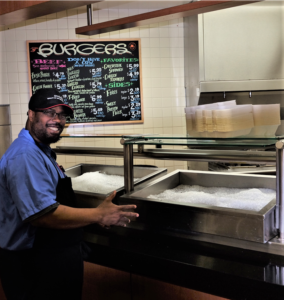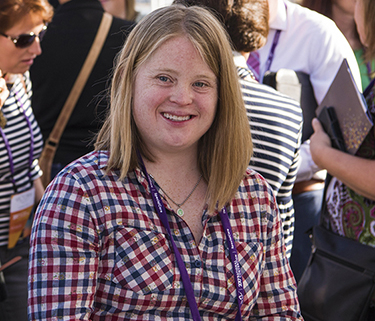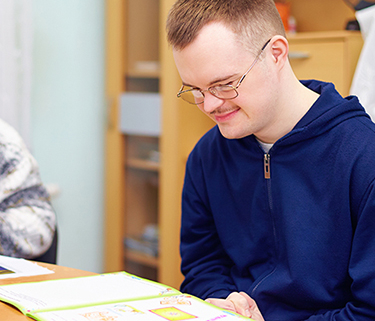Improving Recovery From Sexual Assault With Trauma-Informed Care
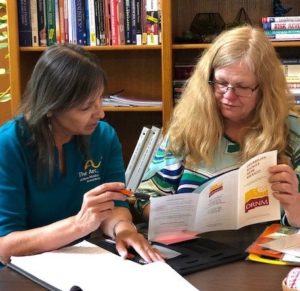 In communities across the country, a silent epidemic plagues the disability community. People with intellectual and developmental disabilities (IDD) are seven times more likely than the rest of the population to experience sexual violence. Despite this, understanding of how to effectively provide services for people with IDD remains elusive, and survivors often find themselves unable to get the help they need in their communities. Organizations across the country are working to tackle this problem through training, education, and trauma-informed care. The Arc of New Mexico is one such organization, where Chief Executive Officer Veronica Chavez-Neuman and program lead Pamela Stafford are providing victim advocacy services for survivors of sexual assault with IDD and helping build the capacity of their community to respond in an informed, effective, and sensitive way.
In communities across the country, a silent epidemic plagues the disability community. People with intellectual and developmental disabilities (IDD) are seven times more likely than the rest of the population to experience sexual violence. Despite this, understanding of how to effectively provide services for people with IDD remains elusive, and survivors often find themselves unable to get the help they need in their communities. Organizations across the country are working to tackle this problem through training, education, and trauma-informed care. The Arc of New Mexico is one such organization, where Chief Executive Officer Veronica Chavez-Neuman and program lead Pamela Stafford are providing victim advocacy services for survivors of sexual assault with IDD and helping build the capacity of their community to respond in an informed, effective, and sensitive way.
What kind of victim services do you provide? How are you making yourself known as a resource to victims with disabilities?
We provide support to access the justice/legal system. We provide support to improve disability informed medical and mental health supports and trauma-informed disability services. We have presented at various conferences and provider forums, posted information on social media, and have had articles written in The New Mexican newspaper. We have also presented at various case management agencies, provider agencies meetings, and community access locations.
What are the steps you take when you become aware that someone with IDD has experienced sexual assault? Who typically reports the incident to you, and does that affect your next steps for addressing it?
It’s difficult to talk about typical when each situation is individually unique. The safety of the individual is always a priority. We get referrals from sexual assault providers, from family members and from self-referrals. The victim /survivor is the decision maker about how they want to proceed and what help they need. We are finding that the services we provide are distinct from other victim advocacy agencies in terms of the variety of supports needed.
How do you train and recruit staff to ensure confidentiality and appropriate response when someone needs help?
In order to assure we have legal privilege in courts, each person who may provide victim advocacy is required to take at least 40 hours of victim advocacy training. This first year in particular has been a very heavy training year. We also contracted with an attorney specifically for this program to help review policies and internal procedures. In terms of recruitment, we debated whether experience with disability or experience with sexual assault was a priority. The person we selected had educational experience with marginalized populations and a strong sense of community justice.
How does this program help the broader criminal justice community (including law enforcement, legal professionals, and victim service agencies) better respond effectively in sexual assault cases? What are some challenges you have faced that other chapters may need to be aware of?
Amanda Thompson, our victim advocate, participates in several sexual assault response teams and a high-risk victims’ task force. Her participation has increased awareness of the IDD population in general. One surprising challenge is how distinct perceptions and even language is between sexual assault providers and disability communities. Even the word “advocacy” means very different things in the two groups. Another surprise was the reluctance of a high school to comply with Title IX regulations in a case within a special needs classroom. The breadth of knowledge to do this job well surprises us daily.
What advice do you have for other chapters looking to build their own technical assistance and referral program for victims of sexual assault? How they can secure funding and build a successful program?
The primary thing I would do differently is begin with two victim advocates instead of one to build a greater support team due to the emotional toll of the position. I also wish we had spent more time getting to know the players and politics of the sexual assault victim advocacy world in New Mexico prior to implementing the work. Our program is funded with state appropriations from the crime victims reparation commission but there is federal funding as well.

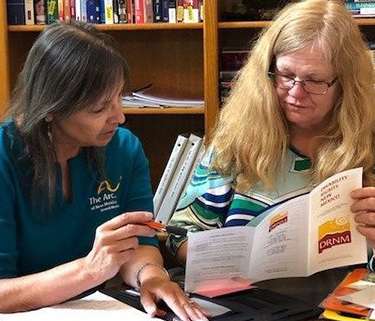

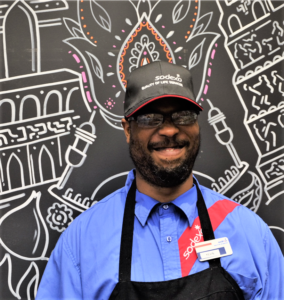 Kevin will be the first to tell you that he is a people person — and it is easy to see why. His sense of humor, high energy, and positivity are hard to miss in National Geographic’s Food Court, where he works both in the front and the back of the house to ensure that the center’s employees are well taken care of during their lunch breaks.
Kevin will be the first to tell you that he is a people person — and it is easy to see why. His sense of humor, high energy, and positivity are hard to miss in National Geographic’s Food Court, where he works both in the front and the back of the house to ensure that the center’s employees are well taken care of during their lunch breaks.